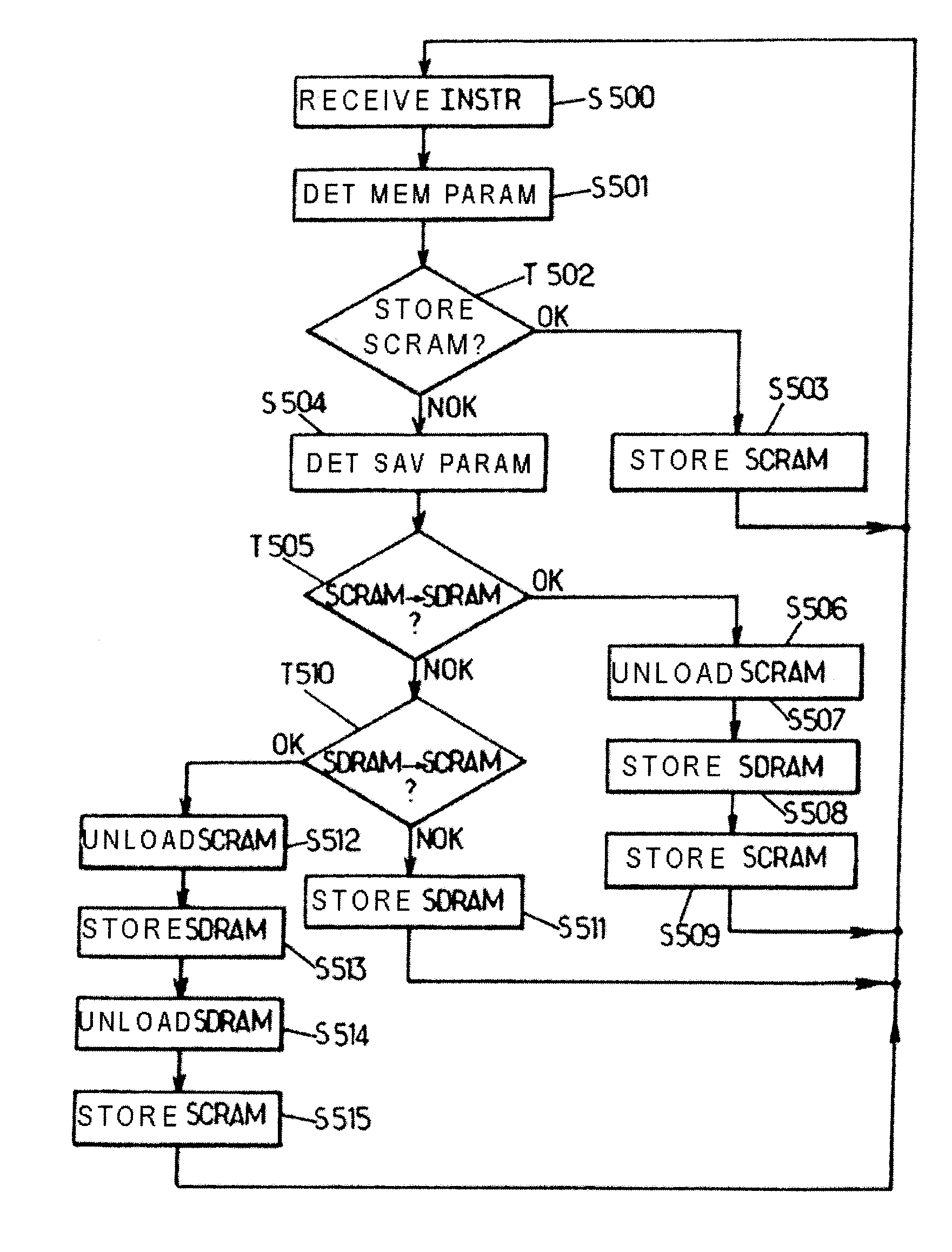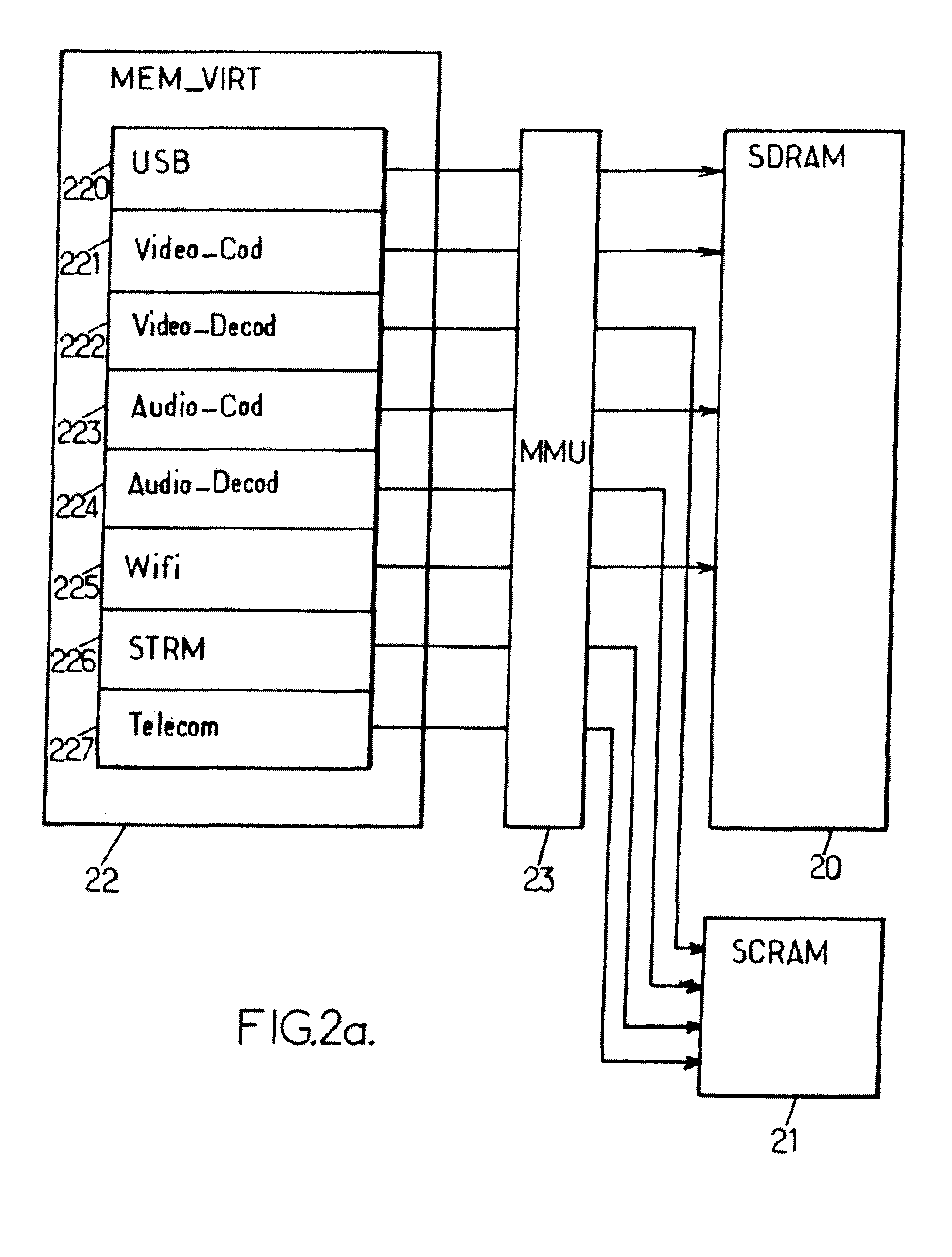Dynamic Management of Random Access Memory
a random access memory and dynamic management technology, applied in the field of computer systems, can solve the problems of significant computational resources, high computational performance, and significant increase in the cost of the communication system, and achieve the effects of improving the performance of the computer system, reasonable development period, and limited cos
- Summary
- Abstract
- Description
- Claims
- Application Information
AI Technical Summary
Benefits of technology
Problems solved by technology
Method used
Image
Examples
Embodiment Construction
[0065]A processing unit structure of a computer system is described very schematically, with reference to FIG. 1.
[0066]In this structure, there is a processor 10 in charge of executing more or less basic instructions in the context of the more general execution of a computer program.
[0067]The processor 10 has different types of memory available for this purpose.
[0068]It has several cache memories available to it. This type of memory is used to store data temporarily that are useful for the execution of the instructions. This type of memory can store data to be processed such as the operands of operations to be executed by the processor, or the identification of operations to be performed. This memory has very good performance in terms of access time, and is used for copying the data used to bring them close to the processor.
[0069]Among such cache memory is the “L1” cache 11. This is the cache closest to the processor, and is also the highest performance memory in terms of access tim...
PUM
 Login to View More
Login to View More Abstract
Description
Claims
Application Information
 Login to View More
Login to View More - R&D
- Intellectual Property
- Life Sciences
- Materials
- Tech Scout
- Unparalleled Data Quality
- Higher Quality Content
- 60% Fewer Hallucinations
Browse by: Latest US Patents, China's latest patents, Technical Efficacy Thesaurus, Application Domain, Technology Topic, Popular Technical Reports.
© 2025 PatSnap. All rights reserved.Legal|Privacy policy|Modern Slavery Act Transparency Statement|Sitemap|About US| Contact US: help@patsnap.com



